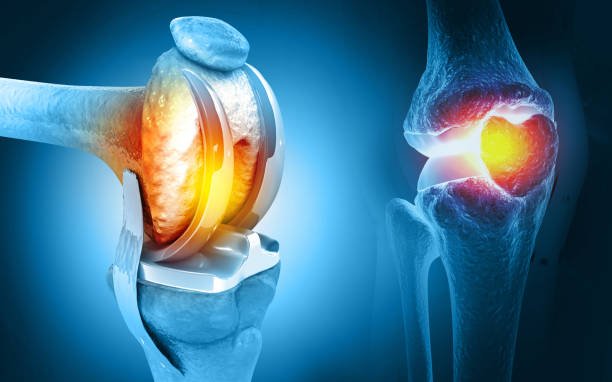In the ever-changing world of medicine, knee replacement surgery the advances in orthopaedics in recent years. This life-changing surgery gives people with severe knee arthritis or a crippling knee injury a ray of hope. It gives them the chance to have a better quality of life by reducing their pain and giving them more mobility. This article discusses the benefits of this procedure.
The Knee replacement surgery is not a one-size-fits-all procedure. It includes four main types to address varying patient needs: Total Knee Replacement (TKR), Partial Knee Replacement (PKR), Kneecap Replacement (Patellofemoral Arthroplasty), and Complex or Revision Knee Replacement. The choice of surgery depends on factors like the extent of knee damage, its location, and the patient’s overall health, highlighting the tailored approach of Knee replacement surgery.
Total Knee Replacement (TKR), also called Total Knee Arthroplasty, is the most common knee replacement surgery done today. During TKR, an orthopaedic surgeon removes the damaged bone and cartilage and replaces it with a prosthetic implant, which is usually made of metal or plastic. Mostly, this surgery is recommended for people who have severe knee damage or advanced arthritis.
A less invasive alternative to TKR is Partial Knee Replacement (PKR), also called Unicompartmental Knee Arthroplasty. During a PKR, the surgeon replaces the damaged part of the knee while keeping the healthy parts intact. The knee is made up of three parts: the medial compartment (the inside), the lateral compartment (the outside), and the patellofemoral compartment (the front of the knee between the kneecap and thighbone). If arthritis is only in one part of the knee, PKR is a good option.
Kneecap Replacement, also called Patellofemoral Arthroplasty, is a type of knee replacement surgery for people with arthritis in the front part of their knee. In this specific surgery, the underside of the kneecap and the front part of the knee are replaced. It helps patients feel much less pain and gives them back their ability to move around.
Read also After Knee Replacement: What to Expect
Complex or Revision Knee Replacement is the most difficult type of knee replacement surgery. It is usually for those with severe arthritis, who have lost a lot of bone, or have already had knee replacement surgery that didn’t work. During this procedure, the surgeon may use larger implants or other special tools to ensure that the new joint is securely attached to the bone.
A crucial aspect after the surgery is the rehabilitation process leading to recovery. Physical therapy is usually started right after surgery. It helps patients strengthen the muscles around the new joint and regain their mobility. To get the best possible results from surgery, patients should follow the surgeon’s instructions and the physical therapy plan that has been given to them.
Before a patient goes through with knee replacement surgery, they need to have a full, honest conversation with their surgeon. Several aspects need to be carefully looked at, such as the patient’s medical history, the amount and location of knee damage, the patient’s age, weight, lifestyle, and overall health. These things are crucial in choosing the most appropriate knee replacement surgery.
Several reputed hospitals have specialised orthopaedic departments with renowned surgeons and trained support staff. They work together to help patients through the complicated process and ensure they get appropriate care.
To sum up, knee replacement surgery is common, but it’s important to remember that it’s a major medical procedure requiring careful planning and decision-making. In this article, we wanted to explain the different kinds of knee replacement surgeries and the treatment options. Knee replacement surgery can help people with severe knee arthritis or knee injuries get rid of pain, get their mobility back, and have a better quality of life.
